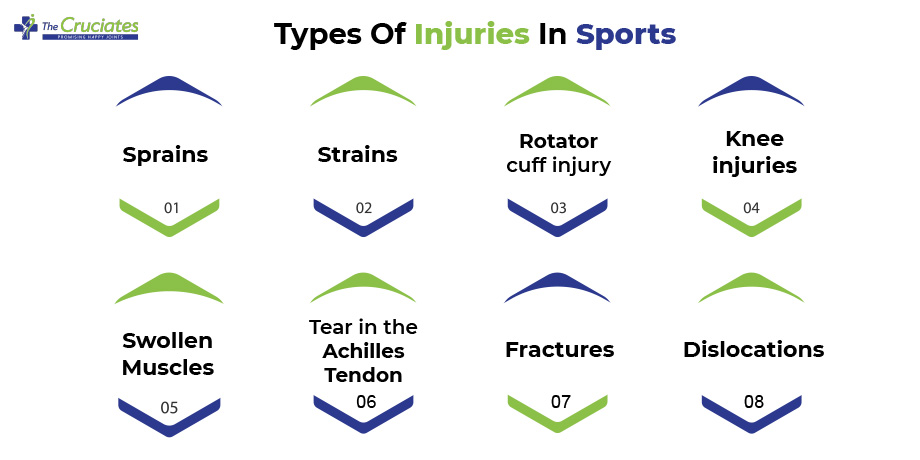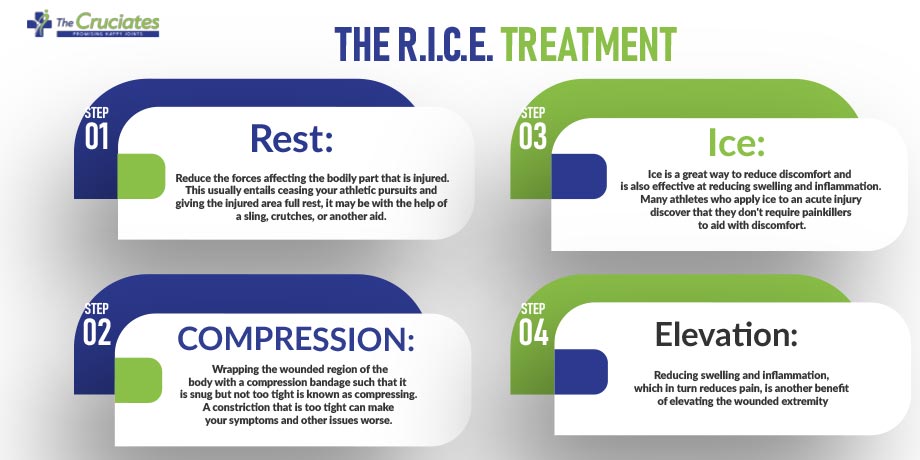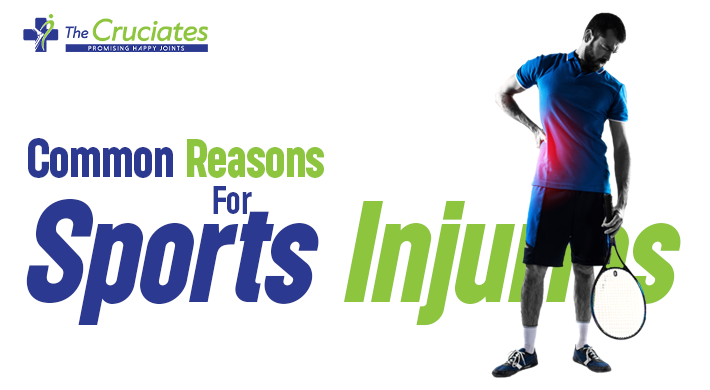How many times have you or someone else been sidelined with an injury because of sports, exercise, or fitness? You may not be aware of it, but there are certain things you can do to reduce your chances of facing common reasons for sports injuries and risks from sports, exercise, or fitness activities. The likelihood of injury in these activities can be significantly reduced if you are aware of how certain factors can increase your risk for sports injuries and take appropriate steps to prevent them from happening. Here are five of the most common reasons for sports injuries.
1) Unbalanced Training Sessions
If you’re only focusing on a particular muscle group, you’re more likely to experience various types of injuries in sports. This is because you’re not giving your body the chance to rest and recover properly. Instead, you’re overworking yourself and putting unnecessary strain on your muscles. Similarly, if your physical training protocols are poorly planned, you could be increasing your risk of injury.
Make sure you’re mixing up your workouts and giving your body ample time to recover between sessions. Likewise, don’t focus too much on any one muscle group in your workout routine. Remember that every exercise uses different sets of muscles so make sure you have a well-balanced workout routine that utilizes all muscle groups equally. Ignoring warning signs from your body can lead to even more serious injuries down the line – it’s always better to pay attention and learn how to prevent sports injuries!
2) Incorrect Rehabilitation
One of the most common reasons for sports injuries and risks is incorrect rehabilitation following an initial injury. Poorly planned rehabilitation protocols, ignorance about the rehabilitation process, and failure to understand the severity of the initial injury can all lead to further problems down the road.
The first few days following an injury are crucial in terms of successful rehabilitation because it’s then that the injured tissue has its highest chance of healing. Depending on what type of tissue was damaged and how severe the injury was, more than six weeks may be needed before full recovery from the original trauma has taken place.
3) Nutrition Imbalance
When it comes to staying healthy and avoiding reasons for sports injuries, nutrition is vital. A balanced diet that includes all the essential nutrients will help keep your body strong and reduce the risk of various types of injuries in sports. hydration is also important, especially for athletes. Be sure to drink plenty of fluids and replenish electrolytes after intense training sessions or competitions. Finally, make sure you’re getting enough of the right macronutrients like carbohydrates, proteins, and fats, as well as vitamins and minerals.
You should also ensure that you get enough calcium for bone health and maintenance. Different sports can require different nutritional strategies, so be sure to speak with a sports injury specialist in India and a dietician before trying to comprehend how to prevent sports injuries on your own and make any changes to your diet.
4) Overuse Injuries
One of the most common reasons for sports injuries and risks is overuse. This can lead to stress fractures, ligament injuries like ACL tears, and even career-ending injuries. To avoid these types of injuries you should give proper rest between sessions. It’s also important to have time to heal after an injury before you return to playing your sport or exercising again too soon, as this could lead to more serious injury down the road.
Proper rehabilitation also plays a role in preventing injury, which is why it’s important not only to understand how to prevent sports injuries but to be sure you are doing the rehabilitation process correctly.
5) Doing Too Much Too Early
If you’re coming back from an injury, it’s important to ease yourself back into things gradually. Doing too much too soon is one of the most common reasons for sports injuries. When returning to sports after an injury, a gradual progression of activity is essential to prevent re-injury and allow the body time to recover. Start with only a few minutes at a time and work your way up as your muscles strengthen. You should also be careful not to overuse other muscles to compensate for those that are injured or weak.
Ignoring this rule can lead to new injuries and the worsening of old ones. Along with taking care when returning to sports after an injury, proper rehabilitation is key. If done correctly, rehabilitation will help strengthen injured areas and increase blood flow to these areas. Improper rehabilitation may make things worse instead of better by increasing swelling or causing additional damage!
What Are The Types Of Injuries In Sports

Different types of injuries in sports result in various symptoms and repercussions. The most typical forms of sports injuries consist of:
Sprains – A sprain happens when the ligaments are overextended or torn. Ligaments are strands of connective tissue that hold two bones together in a joint.
Strains – A strain happens when muscles or tendons are overextended or torn. Tendons, which connect bone to muscle, are substantial, fibrous strands of tissue. Commonly, sprains and strains are confused. Here is how you can tell them apart.
Rotator cuff injury – The rotator cuff is made up of four muscle groups that cooperate to make it. Your shoulder is kept mobile in all directions by the rotator cuff. The rotator cuff might become weaker due to a tear in one of these muscles.
Knee injuries – knee injury that restricts the knee joint’s motion may qualify as a sports injury and can be treated by arthroscopic knee surgery. It may be anything from an overstretch to a tear in the knee’s tissues or muscles.
Swollen muscles – An injury’s natural response is to swell. Muscles that are swollen may also be painful and frail.
Tear in the Achilles tendon – A thin, strong tendon at the back of your ankle is called the Achilles tendon. This tendon may tear or rupture when playing sports. When it occurs, you could feel excruciating pain all of a sudden and have trouble walking.
Fractures – Broken bones and bone fractures are both common terms.
Dislocations – Your body may dislocate a bone as a result of sports injuries. A bone is driven out of its socket when that takes place. Swelling and weakening may result from this, which can be distressing.
Treatment For Common Sports Injuries

The extent and location of your injury will determine your course of treatment. Controlling inflammation and encouraging the healing process are the primary goals of the first treatment for many types of injuries in sports. For the immediate care of the majority of acute injuries, the acronym R.I.C.E. is useful guidance. You will carry out the following actions when administering R.I.C.E. treatment:
Rest: Reduce the forces affecting the bodily part that is injured. This usually entails ceasing your athletic pursuits and giving the injured area full rest, it may be with the help of a sling, crutches, or another aid.
Ice: Ice is a great way to reduce discomfort and is also effective at reducing swelling and inflammation. Many athletes who apply ice to an acute injury discover that they don’t require painkillers to aid with discomfort.
Compression: Wrapping the wounded region of the body with a compression bandage such that it is snug but not too tight is known as compressing. A constriction that is too tight can make your symptoms and other issues worse.
Elevation: Reducing swelling and inflammation, which in turn reduces pain, is another benefit of elevating the wounded extremity.
For minor sports injuries, this kind of treatment is beneficial when trying to understand how to prevent sports injuries. Within the first 24 to 36 hours after the injury, use the RICE approach for optimal outcomes. After a brief period of rest, protection and ideal loading should take their place. P.O.L.I.C.E is the term for this method (protection, optimal loading, ice, compression, and elevation). Using crutches or a sling to support the injured joint while moving it gently and gradually applying weight to the wound will frequently hasten to heal.
After the initial healing phase, your sports injury specialist will decide whether any extra treatment is required and may suggest that you seek help from a specialist for your particular injury.
[Also Read:- Arthroscopy Shoulder Surgery]

